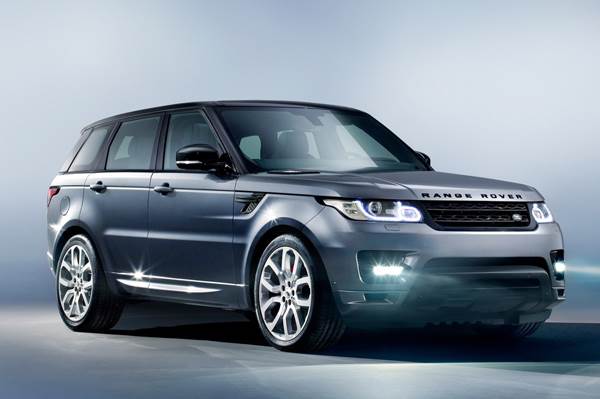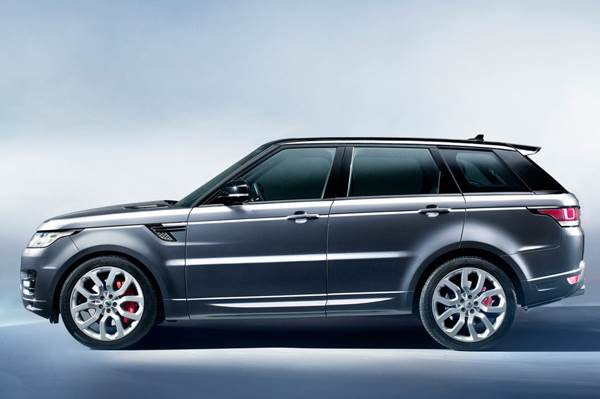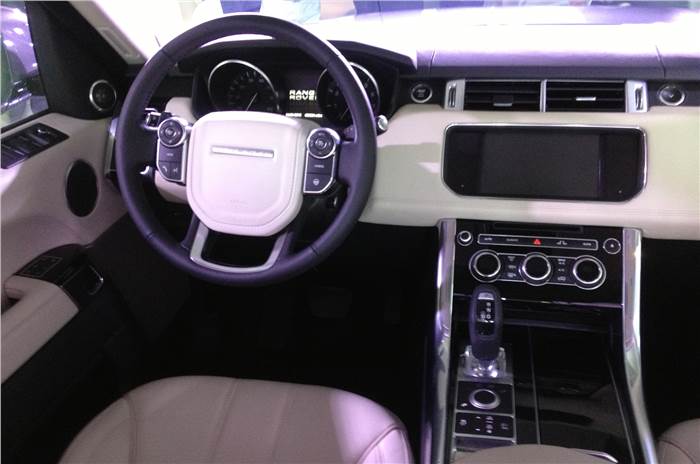The all-new Range Rover Sport, revealed at the New York motor show, is a model described by Land Rover design boss Gerry McGovern as being “the Porsche 911 of SUVs”.
It’s his way of emphasising the essential difference between the all-new Sport — due in showrooms in September — and the recently launched, considerably larger Range Rover flagship which shares many of the Sport’s underpinnings but not its essential character. “We’ve taken ride, handling and agility to another level in the Sport,” adds brand boss John Edwards. “This is the fastest, most agile and most responsive Land Rover ever.”
The first-generation Sport rapidly achieved halo status as JLR’s most profitable car, scoring impressive success in the US and especially in Manhattan — hence the decision to unveil the second-generation car at the New York motor show this week. Sales have always been strong; even last year it notched up 56,000 sales, its second-best result to date.

The styling — more sophisticated and sporty than before — makes obvious reference via the floating roof and basic proportions to the ‘senior’ Range Rover, but it is both low and compact in comparison, with greater windscreen rake, a forward control aspect and pronounced wheel arches and haunches that advertise its dynamic priorities. “It’s dramatic and powerful, with immense road presence,” claims McGovern.
The new Sport has much more in common with the Range Rover than the old model, sharing most of its primary suspension and transmission parts and key components of its aluminium monocoque chassis (adopted instead of the original model’s heavy, old-tech, twin-rail steel chassis). The new car is 62mm longer than the outgoing Sport, but still 149mm shorter than the flagship Range Rover, while its wheelbase is 178mm longer than that of its predecessor. Thus its rear overhang is markedly shorter than before and the redesigned cabin offers both more rear-seat knee room and space for an optional pair of electrically powered, fold-down, child-friendly seats forming a third row, making this a ‘5+2’ SUV for the first time.

Weight saving is a highlight of the new Sport. Engineers claim a ‘real-world’ saving of around half a tonne over the previous model, though that is calculated by comparing the latest high-output V6 with the previous diesel V8, which offers similar performance. If you compare old and new V6s directly, the difference is a still-impressive 420kg.
Engineers have also chased efficiency through aerodynamics. The Sport has movable vanes in its cooling system to cut drag on the move, plus near-flush glazing and a smooth underfloor panel to reduce the drag coefficient to 0.34.
At launch, the Sport will be offered with a choice of two engines: a 288bhp 3.0 SDV6 diesel and a 503bhp supercharged 5.0-litre petrol V8. These will be joined next year by a 254bhp TDV6 diesel and a 334bhp 4.4-litre SDV8 ‘super-diesel’ with a 6.5sec 0-100kph time. Later in 2014 we’ll see a turbocharged 2.0-litre petrol engine option — broadly similar in performance to the outgoing V8 diesel.

These engines (all of which incorporate stop-start) send their power through an eight-speed ZF automatic gearbox to a permanent 4x4 system. But in a big break with the past, the Sport will be offered either with a two-speed transfer case that offers the traditional high range and low range and a 50/50 front/rear torque split, or a single-speed transfer case with a default 42/58 per cent torque split to give a rear-drive bias for sharper on-road handling.
Towards the end of 2014, Land Rover promises to deliver a “highly innovative” diesel-electric hybrid version of the Sport that will emit only 169g/km of CO2.
The suspension features air springs and uses many of the same lightweight components as the new Range Rover, but the rates of the springs and continuously variable dampers are biased much more towards handling than the Range Rover’s luxury-focused set-up, and there’s a new Dynamic setting in the Terrain Response menu to best configure the car for energetic on-road driving. Variable-ratio electric power steering is adopted, with its gearing sharpened to three turns between locks.
The whole chassis bristles with electronic driver aids, including roll stability control, corner brake control and engine-drag torque control to go with the more familiar hill descent control, stability control and hill-start assist.

The interior draws much from the conventions established by the previous Range Rover Sport model: driver-orientated controls, slightly lower driving position than the Range Rover (by about 20mm) and a high and very prominent centre console, all of which help to give the whole thing a sporting aspect. But there’s much progress in the execution, which is more sophisticated in design, includes new kit like an optional head-up display, simplifies the controls and generally reaches a higher level of quality that’s perceptible as soon as you experience it. McGovern cites “cleaner, purer surfaces”, and the materials quality has taken another big step forward. What’s more, there’s much more choice for owners: lots of colours and textures and no fewer than 11 designer-endorsed ‘themes’.
Variants avialable at launch are the SDV6 and the Supercharged Autobiography, the TDV6 will arrive next year.






Comments
Member Login
Personal Details
No comments yet. Be the first to comment.